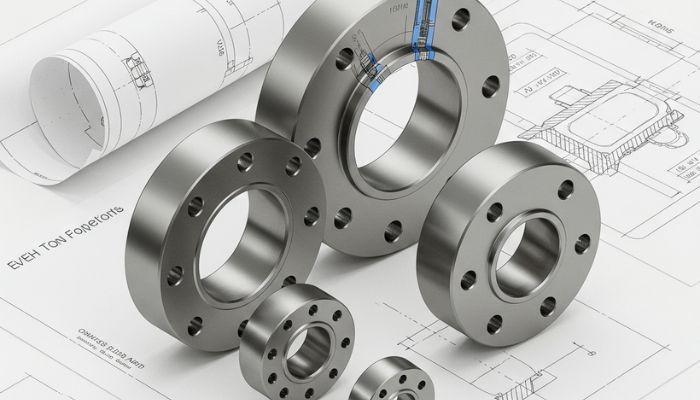Precision engineering demands exact specifications, particularly when dealing with critical piping components like anchor flanges. Having a reliable anchor flanges weight chart in kg, mm, pdf format at your disposal transforms complex project planning from guesswork into calculated precision. This comprehensive reference addresses the growing need for accurate weight specifications in modern industrial installations where every kilogram matters for structural integrity and operational efficiency.
Navigating Anchor Flanges Weight Chart in kg, mm, PDF Documentation
Engineering teams worldwide recognize that successful project execution hinges on access to precise technical data. Weight specifications directly influence foundation design, crane capacity requirements, and overall system performance. The complexity of modern industrial facilities necessitates meticulous planning where anchor flanges weight data serves as the cornerstone of safe, efficient installations.
Anchor Flanges: The Backbone of Industrial Connections
These robust connectors function as vital links between piping networks and supporting structures, accommodating system movements while maintaining leak-tight seals. Unlike standard flanges, anchor flanges incorporate design features specifically engineered to handle axial thrust forces and thermal stresses inherent in high-performance piping systems.
Engineering Excellence Through Material Innovation
Advanced Metallurgy Options
Contemporary anchor flanges utilize sophisticated materials engineered for specific service conditions:
- Duplex Stainless Steel: Exceptional strength-to-weight ratio for offshore applications
- Nickel Alloys: Superior resistance to aggressive chemical environments
- Chrome-Moly Steel: Enhanced high-temperature performance for power generation
Performance-Driven Design Characteristics
Weight optimization in anchor flanges reflects advanced engineering principles. Manufacturers now employ finite element analysis to minimize material usage while maintaining structural integrity, resulting in components that balance performance with practical handling considerations.
Detailed Anchor Flanges Weight Reference Tables
Metric Standard Weight Specifications (DIN/EN Series)
Nominal Bore (mm) | PN Rating | Mass (kg) | External Dia (mm) | Face Thickness (mm) |
40 | 16 | 1.9 | 140 | 14 |
50 | 16 | 2.7 | 155 | 16 |
65 | 16 | 4.3 | 175 | 18 |
80 | 16 | 6.1 | 200 | 20 |
100 | 16 | 9.8 | 235 | 22 |
125 | 16 | 15.2 | 270 | 24 |
150 | 16 | 21.7 | 300 | 26 |
200 | 16 | 35.9 | 375 | 30 |
250 | 16 | 58.3 | 450 | 34 |
300 | 16 | 84.6 | 515 | 38 |
350 | 16 | 116.8 | 580 | 42 |
400 | 16 | 154.2 | 650 | 46 |
500 | 16 | 245.7 | 770 | 52 |
High-Performance Anchor Flanges Mass Data
Nominal Bore (mm) | PN Rating | Mass (kg) | External Dia (mm) | Face Thickness (mm) |
40 | 40 | 3.1 | 140 | 18 |
50 | 40 | 4.8 | 155 | 22 |
65 | 40 | 7.9 | 175 | 26 |
80 | 40 | 11.4 | 200 | 30 |
100 | 40 | 18.6 | 235 | 34 |
125 | 40 | 28.9 | 270 | 38 |
150 | 40 | 42.3 | 300 | 42 |
200 | 40 | 71.8 | 375 | 48 |
250 | 40 | 112.5 | 450 | 54 |
300 | 40 | 167.9 | 515 | 60 |
Strategic Procurement Through Modern B2B Marketplace Solutions
Digital Transformation in Industrial Supply Chains
Contemporary procurement strategies leverage sophisticated b2b marketplace platforms that revolutionize how engineering teams source critical components. These digital ecosystems provide unprecedented access to technical specifications, real-time inventory data, and competitive pricing structures that traditional procurement methods cannot match.
Verification Protocols and Quality Standards
- Third-party material verification reports
- Dimensional accuracy certifications
- Hydrostatic test documentation
- Weight calibration certificates
Critical Installation Parameters and Mass Considerations
Foundation Engineering Requirements
Accurate weight data from anchor flanges specifications directly impacts foundation design calculations. Structural engineers must account for:
- Dead Load Distribution: Static weight plus operating fluid mass
- Dynamic Loading: Vibration and pulsation effects during operation
- Environmental Factors: Wind loading and seismic response characteristics
Logistics Planning and Material Handling
Heavy-duty anchor flanges demand specialized handling protocols. Weight specifications guide selection of appropriate lifting equipment, transportation methods, and installation sequences that ensure worker safety and component integrity.
Technical Documentation and Digital Resource Management
Standardized Reference Formats
Industry-leading suppliers provide comprehensive anchor flanges weight chart in kg, mm, pdf documentation that integrates seamlessly with modern CAD systems and project management platforms. These standardized formats facilitate accurate takeoffs and eliminate specification errors that plague traditional manual processes.
Next-Generation Procurement Platforms
Advanced b2b marketplace solutions like Pipex.ai transform component sourcing through integrated technical databases, automated specification matching, and streamlined approval workflows. These platforms eliminate traditional procurement bottlenecks while ensuring compliance with project specifications and quality standards.
Future Trends in Anchor Flanges Design and Specification
Sustainable Engineering Practices
Modern anchor flanges manufacturing increasingly emphasizes environmental responsibility through optimized material usage, recyclable alloy selection, and energy-efficient production methods. Weight reduction strategies now balance performance requirements with sustainability objectives.
Digital Integration and Smart Procurement
Emerging technologies enable real-time specification verification through platforms like Pipex.ai, where artificial intelligence algorithms match project requirements with optimal component selections. This technological advancement minimizes human error while accelerating procurement cycles.
Professional Implementation Guidelines
Understanding anchor flanges weight characteristics represents just one aspect of successful industrial project execution. Engineers must integrate this data with broader system requirements, environmental conditions, and operational parameters to achieve optimal performance outcomes.
The evolution of digital procurement through specialized b2b marketplace platforms continues reshaping how professionals access critical component data, emphasizing the importance of maintaining current, accurate weight specifications for anchor flanges across all industrial applications.

